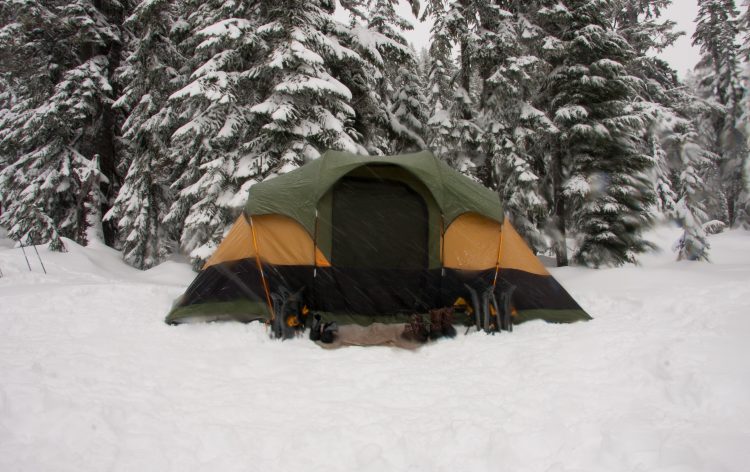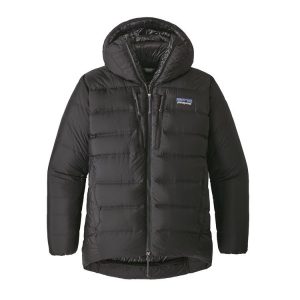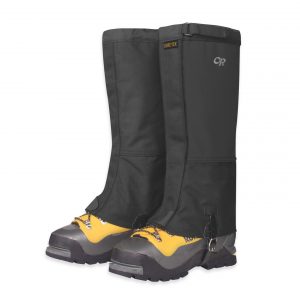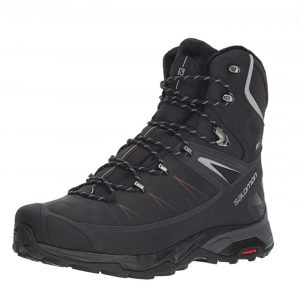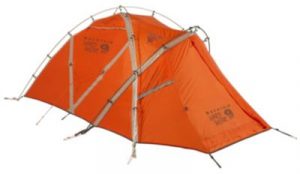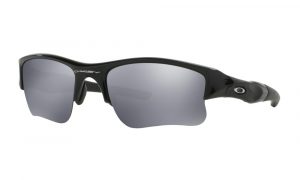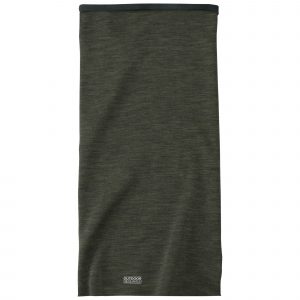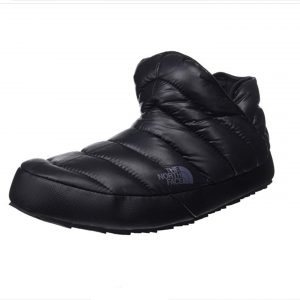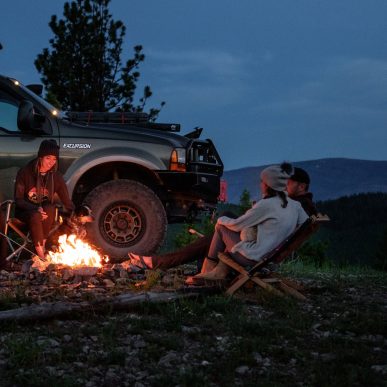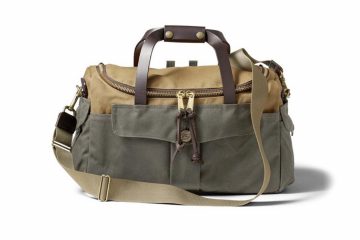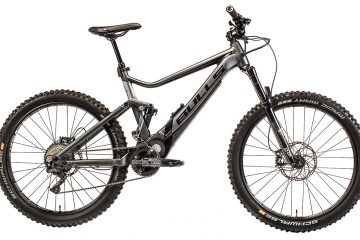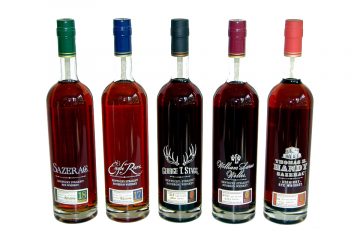With winter right around the corner, it’s time to start gearing up for the real cold weather camping. And for many of us in colder climbs and higher elevations, it’s already upon us. And while the basic essentials you’re taking with you remain the same, winter camping and backpacking brings new challenges, as you’re forced to deal with plunging temperatures, flying snow and unpredictable weather – all elements that can make a trip go south quickly. Despite those challenges, however, winter camping presents a chance for a truly rewarding, peaceful experience you can’t always get other times of the year.
So instead of staying cooped up inside this winter, keep reading to see some off the essential tips, hacks and gear going outside calls for this time of year.
Contents
- Some Essential Winter Camping Tips
- Sleep With Your Boots or Boot Liners In The Sleeping Bag
- Store Your Water Bottles Where They Won’t Freeze
- Use Lithium Batteries For Headlamps and Other Essential Electronics
- Pick Your Sleeping Pad Carefully
- Wool Rocks
- Get The Campsite Ready And Pack It Down
- Keep Eating and Drinking
- Go For Some Vapor Barrier Liners On Your Feet
- More Essential Winter Gear
- A Good Insulated Jacket
- Serious Gaiters
- Bombproof Waterproof Boots
- Very, Very Warm Gloves
- A Good 4-Season Tent
- Reliable Sunglasses
- A Warm Neckwrap
- Maybe Some Booties for Sleeping?
- A Reliable Headlamp – or Two
Some Essential Winter Camping Tips
Sleep With Your Boots or Boot Liners In The Sleeping Bag
This is seems gross and a little bit smelly at first, but is essential; the frigid weather winter brings will otherwise cause your boots and liners (usually soaked with sweat by this time) from freezing solid if left outside the bag. Putting those on in the morning would not only be super uncomfortable, but could also end up being tremendously dangerous, with the potential for frostbite right around the corner. Instead, keep them right in the sleeping bag with you, letting your own body heat keep them warm and keep them from turning into heavy, padded icicles.
Taking this even further, you can store extra clothes in the sleeping bag during the day (if you have room), keeping them warm and ready to go if you need to pop them on.
Store Your Water Bottles Where They Won’t Freeze
This might require some insulated sleeves or pouches, but you need to keep your drinking from freezing over the course of the day. Trying to drink frozen water or ice while hiking is impossible and reheating the water (if it’s not stuck in your bottle) wastes precious fuel. Insulated sleeves will allow you to store the bottles on the outside of your pack; otherwise, you’ll need to stick the bottles in the middle of your pack, surrounded by extra warm clothes.
Use Lithium Batteries For Headlamps and Other Essential Electronics
Ever noticed how your phone dies much faster in winter, or how your car won’t start when it’s nearly zero? Cold weather kills batteries – and you don’t want that to happen when you’re tying to navigate (or start a fire, or cook, or anything) by headlamp. So take lithium batteries with you; they perform much, much better in cold weather than regular NiMh or alkaline batteries. They’re also smaller, weigh less and last up to three times as long.
Pick Your Sleeping Pad Carefully
Your sleeping bag is obviously essentially, but insulation between you and the ground can be just as vital for safety (not to mention comfort!) in frigid temps. Cold air coming off the frozen ground can be deadly, and you need a solid level of insulation beneath you to keep it from ruining your camping trip. Thankfully, there’s no shortage of excellent mats out there to help with this. For winter camping, look for an R-value of at least 3.5 to 4. For the real freezes of winter, look for one of 4.5, or preferably, above. Suggestions: Expad Megamat or NeoTherm. An extra closed-cell foam pad underneath can add some extra insulation when you don’t need to pack extremely light.
Wool Rocks
Wool use to have a reputation for being itchy and uncomfortable. Not anymore. Merino wool and other modern weaves are known for being some of the softest, most comfortable pieces of clothing you can get – and often far warmer, breathable and more versatile than a lot of synthetics. Icebreaker and Smartwool are standout picks for their fantastic baselayers and socks – an area you really don’t want to skimp on.
Get The Campsite Ready And Pack It Down
When you’ve find a suitable campsite, take a few minutes to pack the snow down hard and smooth across the whole campsite. This makes it easier to pitch the tent, as well as move around the campsite, and keeps the tent floor from ripping when you move around the uneven surface below it.
Keep Eating and Drinking
You may not realize it, but your body will be burning a lot more calories in the very cold weather than in warmer weather. You’ll need to eat more food to make up for it and keep yourself fueled; fats, like nuts, are good for energy, delicious, and easy to pack. Also, keep an eye on your water intake, as you may be sweating a lot when moving, but not be as thirsty as might in hot weather. Dehydration can really sneak up on you in cold weather.
Go For Some Vapor Barrier Liners On Your Feet
If your feet tend to get very sweaty, you may just want to cut to the chase and get vapor barrier liner socks. These non-breathable, synthetic sock liners prevent moisture (aka sweat) from escaping from your socks and getting into your shoes. And by keeping the moisture trapped inside, your feet will actually sweat less – keeping them warmer, drier and more comfortable on long hikes. Rab makes an excellent pair we’ve used in past winters. The trick is to put them on over your wool socks, and then
More Essential Winter Gear
A Good Insulated Jacket
Yes, you start with the baselayer, and the midlayers are vital, too. But a good insulated parka or outer layer will be absolutely essential when the temperatures drop quickly, or when you’re just sitting still around the campsite, rather than moving. Down is always a reliable choice, thanks to its packability, warmth and light weight. Look for 700-fill or 800-fill at least, and ensure it has a good hood. Top Pick: Patagonia Grade VII Down Parka
Serious Gaiters
Everyone knows how obnoxious it is to have snow get in their boots, but when you’re out in the backcountry, wet feet can have huge consequences. Tall gaiters help solve these problems. Outdoor Research good pair. Their Crocodile Gaiters stand 15-19” tall, have a two-layer waterproof construction with a Gore-tex upper and nylon baselayer. They’ll keep your feet and ankles dry and safe for an entire trip in the backcountry.
Bombproof Waterproof Boots
As with gaiters, the right boots can make or break your trip. In winter, you need to keep your feet dry if you’re going to keep them warm, and insulation to complement your wool socks will be essential as the temperatures get extremely cold. Waterproof, breathable boots are the best way to do that. Salomon X ULTRA WINTER CS WP 2 get the job done. They’ve got a full waterproof leather upper, full waterproof bootie, and insulation in the form of Salomon’s insulated membrane T Extreme, Limit and Comfort, which are rated to -13, 10 and 21F, respectively. When you need your feet kept warm, dry and protected at all times, the X Ultra Winter CS are your best bet.
Very, Very Warm Gloves
After a jacket, gloves are usually a first stop for winter shopping. We love the Black Diamond Guide gloves, which have been proven themselves time and time again to be some of the warmest, most versatile and even water-resistant winter gloves out there. They have two liners, one of 170g PrimaLoft gold, the other of boiled wool, complemented by a waterproof, breathable Gore-Tex insert, which also includes Plus Warm Technology. The outside is a combination of 4-way nylon and goat leather palms.
A Good 4-Season Tent
The tent you use in winter needs to withstand high winds, wet conditions, and snow. Potentially lots of it. If your regular tent is upt to the task, opt for a 4-season tent, preferably a freestanding one, which is faster and easier to setup and doesn’t need to be staked down. The Marmot Thor is a good choice, as is the Mountain Hardwear EV2. They ain’t cheap, but they’ll keep your warm, dry and out of the wind in extreme situations.
Reliable Sunglasses
Eye protection is an often-overlooked element of any outdoor kit. The bright sun reflecting off the snow on a clear day creates a lot of glare that can make seeing difficult but can also sunburn your eyes – which are just as painful and dangerous as any other sunburn. Get a good pair of sport sunglasses with wrap-around lenses, like the Oakley Flak Jacket XLJ, with their Plutonite lenses that filter out 100% of UV rays. They’ll also keep snow out of your eyes when the wind starts blowing, and will come in especially helpful when winter turns to Spring, and the sun becomes more prominent.
A Warm Neckwrap
Hoods are awesome but having something dedicated to keeping your neck warm can be a godsend. The Lumen Ubertube neckwrap from Outdoor Research is exactly what you need when the icy winds are blowing. It’s made from a merino wool and polyester blend, with a fleece backer for extra warmth, and can be worn in a variety of different ways; around your neck, pulled over your face, as a do-rag when you warm up and start to sweat. It’s a versatile piece; a scarf for alpine adventurers. You’ll wonder why you never got one before.
Maybe Some Booties for Sleeping?
We already mentioned bringing your socks and boots into the sleeping bag with you to keep them from freezing overnight, but what about your feet themselves? For those of us whose extremities run a bit cold, a pair of insulated booties can make a huge difference around camp and when curling up to catch some sleep. Try these North Face Thermoball booties, with tons of soft Primaloft Thermoball insulation, waterproof recycled PET uppers, and rubber soles. You can use them to shuffle around the tent, campsite, and keep those toes comfortable warm all night.
A Reliable Headlamp – or Two
Winter days are short, and you’re likely to spend just as much time in the dark as you are in daylight. A reliable headlamp is a necessity all year round, but especially so in winter. Our pick is the Fenix HL40r, with a built-in 2000Mah lithium battery and maximum 600 lumens. Read our in-depth review here.
